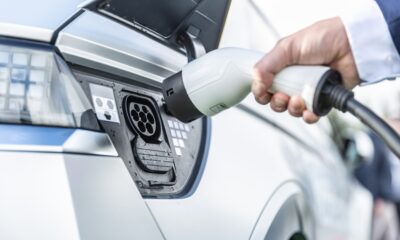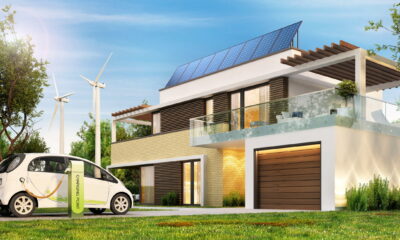

Energy
4 Electric Car Maintenance Tips to Slash Your Carbon Footprint
Although electronic cars are still in the early phases of transitioning towards becoming the primary vehicle of choice for most car owners, the good news is it’s well on its way. This means that there’s a lot of research being done on improving electronic vehicles (EV), in the hopes that one day, they finally dominate the market.
As the call for more efforts to reduce carbon footprint becomes louder, many car owners are now resorting to a more economical alternative to fuel vehicles, which has subsequently increased the demand for electric cars that have significantly lower emissions. But as with any other vehicle, for these cars to last really long, diligence in care and maintenance is a must. The better you take care of it, the longer you’ll enjoy its benefits.
Read this guide for tips on how to best maintain your electric car and reduce your carbon footprint:
1. Understand Proper Battery Maintenance
One of the most important components of electric vehicles is the battery. However, one good thing about them is they’re easier to maintain than fuel vehicle batteries. But when it comes to electronic vehicle batteries, there’s one thing owners should always be aware of: the battery ‘life cycle’ or ‘cycle life.’ This refers to the number of times that the battery can be charged and discharged, which is essentially the battery’s length of life, and is just the same with all other electronic batteries.
One full discharge plus one full charge is equal to one round. For example, if an electronic battery has 500 cycles, it means it has 500 rounds, which will give you a rough estimate of how many months or years you can use it. Once the battery reaches the end of its life cycle, it will start deteriorating fast. It’s also ideal to always keep your battery levels within 20% to 80%.
If you’re looking to buy an electronic vehicle, or already have one, make sure you know its battery’s life cycle. Also, check for battery warranties, and ask how you can properly dispose or recycle them once they’re used up.
2. Minimize Rapid Charging
While rapid charging is convenient, it’s best minimized and should only be reserved for really important cases, such as emergencies. If you’ve got ample time to do regular charging, then there’s no need for rapid charging.
Although they’re generally safe, rapid charging, especially with constant use, will wear out your battery much faster. To avoid this, you can get a dedicated Home EV Charging station installed at home, where you can just leave your vehicle plugged in overnight, and ready for use in the morning.
3. Leave Motor Maintenance To The Pros
Just like their batteries, EV motors are easier to maintain than fuel vehicle motors, another advantage you can enjoy when you make the switch. EV motors contain fewer parts, and because there’s no fuel, there’s no need to worry about fuel filter replacements. You won’t even have to think about replacing or changing the oil.
However, while all these definitely make EVs low-maintenance, it doesn’t mean that you should leave your cares to the wind.
EVs ideally require routine maintenance at certain mileage marks. For example, every 12,000 kilometers, although this varies per brand or manufacturer. While simpler parts like wheels can be maintained by the owner, the motor is something you should leave for professional EV mechanics or technicians, as the high-voltage system can be dangerous even for untrained regular mechanics.
4. Don’t Forget Brake Maintenance
Aside from the regular brakes, EVs also come with what’s known as regenerative braking, or ‘regen’, which can convert kinetic energy to electricity, and boost the battery’s efficiency. While this is a very impressive form of technology, it doesn’t mean you can skip on brake maintenance. However, regenerative braking only requires half of the maintenance that fuel vehicle brakes would need.
Regen brake fluids also require replacing every three to five years, although it’s also recommended to use fluid test kits perhaps every year to check its viability.
Conclusion
Now that you’re aware of what it takes to care for and maintain an electric vehicle, perhaps you can be more convinced to finally make that eco-friendly switch too. EVs can help lower emissions that can influence climate change, so not only are you reducing your carbon footprint, but you’re also saving more when it comes to care and maintenance costs. Think about the significant reduction in your fuel costs in the long run! But most importantly, only choose EVs from a dealer and manufacturer that you can trust.


 Environment10 months ago
Environment10 months agoAre Polymer Banknotes: an Eco-Friendly Trend or a Groundswell?

 Environment12 months ago
Environment12 months agoEco-Friendly Home Improvements: Top 7 Upgrades for 2025

 Features9 months ago
Features9 months agoEco-Friendly Cryptocurrencies: Sustainable Investment Choices

 Features10 months ago
Features10 months agoEco-Friendly Crypto Traders Must Find the Right Exchange





























